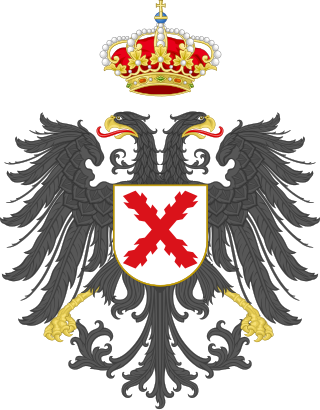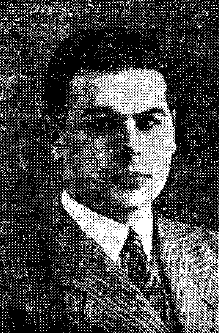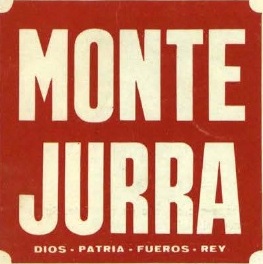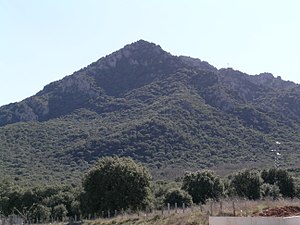
Carlism is a Traditionalist and Legitimist political movement in Spain aimed at establishing an alternative branch of the Bourbon dynasty, one descended from Don Carlos, Count of Molina (1788–1855), on the Spanish throne.
The Argentine Anticommunist Alliance was an Argentine Peronist and fascist political terrorist group operated by a sector of the Federal Police and the Argentine Armed Forces, linked with the anticommunist lodge Propaganda Due, that killed artists, priests, intellectuals, leftist politicians, students, historians and union members, as well as issuing threats and carrying out extrajudicial killings and forced disappearances during the presidencies of Juan Perón and Isabel Perón between 1973 and 1976. The group was responsible for the disappearance and death of between 700 and 1100 people.

Carlos Hugo, Duke of Parma and Piacenza was the head of the ducal House of Bourbon-Parma from 1977 until his death. Carlos Hugo was a Carlist claimant to the throne of Spain and sought to change the political direction of the Carlist movement through the Carlist Party, of which he was the official head during the fatal Montejurra incidents. His marriage to Princess Irene of the Netherlands in 1964 caused a constitutional crisis in the Netherlands.

Prince Sixtus Henry of Bourbon-Parma, known as Enrique V by supporters, is considered Regent of Spain by some Carlists who accord him the titles Duke of Aranjuez, Infante of Spain, and Standard-bearer of Tradition. His heir is Henri, Grand Duke of Luxembourg.

Xavier, Duke of Parma and Piacenza, known in France before 1974 as Prince Xavier de Bourbon-Parme, known in Spain as Francisco Javier de Borbón-Parma y de Braganza or simply as Don Javier, was head of the ducal House of Bourbon-Parma. He is best known as dynastic leader of Carlism and the Carlist pretender to the throne of Spain, since 1936 as a regent-claimant and since 1952 as a claimant, appearing under the name Javier I. Since 1974, he was pretender to the defunct throne of Parma. He is also recognized as involved in the so-called Sixtus Affair of 1916–1917 and in the so-called Halifax-Chevalier talks of 1940.
The Guerrilleros de Cristo Rey was a far-right paramilitary organisation active in the late 1970s in Spain, primarily in the Basque Country and Madrid, but also in Navarre.

Rodolfo Eduardo Almirón Sena was an Argentine police officer and a leader of an extreme right-wing and orthodox peronist death squad known as the Triple A, operating in Argentina from 1973 to 1976 against the left-wing of Peronists and other political dissidents. The group is held responsible for 1,500 murders of government opponents during the terms of Juan and Isabel Perón.
The Carlist Party is a Spanish political party that considers itself as a successor to the historical tradition of Carlism. The party was founded in 1970, although it remained illegal until 1977 following the death of the caudillo Francisco Franco and the democratisation of Spain.

José Luis Zamanillo González-Camino (1903–1980) was a Spanish Traditionalist politician. He was the leader of Carlist paramilitary Requeté structures during the Republic and a champion of Carlist collaborationist policy during mid-Francoism, though in the 1940s he maintained a firm anti-regime stand. He was also a representative of the post-Francoist hard core in the course of early transition to parliamentary democracy. He served in the parliament in two strings of 1933-1936 and 1961–1976; in 1961-1976 he was also a member of the Francoist Consejo Nacional. In 1972-1976 he was a member of Consejo de Estado.

Ramón Massó Tarruella (1928–2017) was a Spanish media and communications expert, known also for his role in Carlism of the 1960s. He gained nationwide recognition in the 1970s and 1980s, when as academic, theorist and brand communications specialist he published numerous books and co-ran a media agency. In historiography he is moderately recognized for his role in politics of mid-Francoism. He was leading the group of young Carlist activists who challenged the Traditionalists and eventually ensured domination of the progressist current. However, his bid to promote Prince Carlos Hugo as a future monarch and as an alternative to prince Juan Carlos failed.
The Carlist Party of Euskal Herria, before 2000 known as the Carlist Party of Euskadi, is a left-wing Carlist Basque political party with presence in the Spanish Basque Country. The party was historically part of the pro-Carlos Hugo wing of the Carlist movement. The party was not legalized until late 1977.

During 40 years of post-Francoist Spain there have been some 200 works published on Carlist history during the Franco regime ; there are some 100 authors who have contributed. The number of major studies – books or unpublished PhD works - stands at around 50, the rest are articles in specialized reviews. Except some 15 titles, almost all have been published in Spain. The interest was scarce in the late 1970s and early 1980s, it grew in the late 1980s and since the early 1990s it remains stable, with some 30 titles published every 5 years.

Juan Sáenz-Díez García (1904–1990) was a Spanish entrepreneur and Carlist politician. In business he is known among key managers of the Simeón García family conglomerate. In politics he counted among architects of cautiously collaborative course during mid-Francoism and leader of a Traditionalist organization Comunión Tradicionalista, active during the transición period. He is also recognized as owner of an iconic Galician daily El Correo Gallego.

The Traditionalist Communion was one of the names adopted by the Carlist movement as a political force since 1869.

Montejurra was a Spanish monthly magazine, published between 1960 and 1971. Based in Pamplona it was distributed mostly in Navarre and Northern Spain, though pre-paid copies sent by mail reached recipients in the entire country. Its circulation is not clear; at one point the editors hoped to have 20,000 subscribers. The monthly was formatted as a political magazine and evolved from a 4-page text-only bulletin to a 44-page partially color illustrated review; altogether there were 106 issues published. Politically Montejurra was clearly identified as a Carlist periodical. Its launch was related to Carlism adopting a conciliatory position towards Francoism; following first ambiguous and then increasingly critical stand, since the mid-1960s the monthly suffered from censorship interventions, eventually to be forcibly closed by administration. Montejurra's editorial board was dominated by members of the Progressist faction and the monthly proved vital in their bid for control of the movement; its dominant thread was promotion of the Borbón-Parma dynasty, and especially prince Carlos Hugo.

The Order of Prohibited Legitimacy is a Parmese dynastic order of knighthood originally awarded by the House of Bourbon-Parma to Carlist supporters. The order was founded in 1923 by Jaime de Borbón y de Borbón-Parma, a Carlist claimant to the Spanish throne and a Legitimist claimant to the French throne, for rewarding loyalists of the Carlist movement. In modern times, there are two branches of the Order. One branch's Grand Master is Prince Carlos, Duke of Parma while the other's is his uncle, Prince Sixtus Henry.

Princess Cécile Marie Antoinette Madeleine Jeanne Agnès Françoise of Bourbon-Parma, Countess of Poblet was a French humanitarian and political activist. A Carlist, she supported the claims of her father, Prince Xavier, Duke of Parma and Piacenza, to the headship of the House of Bourbon-Parma and his claim to the Spanish throne. She later supported the claim of her older brother, Prince Carlos Hugo, Duke of Parma and his progressive reforms to Carlist ideology over that of her younger brother Prince Sixtus Henry, Duke of Aranjuez's claims and traditionalist stance. An anti-fascist, she opposed the dictatorship of Francisco Franco and was expelled from Spain multiple times for working to promote democratic reforms. During her exile, she made connections in French intellectual circles and attending the 1973 World Congress of Peace Forces and 1974 Berlin Conference. She was present, along with some of her siblings, at the Montejurra massacre in 1976.

Mariano Zufía Urrizalqui (1920-2005), Basque: Mariano Zufia Urrizalki, was a Spanish politician and a Navarrese public official. In 1966-1973 he served in the Pamplonese city council, in two separate strings as a deputy mayor. In 1974-1979 he was member of the Navarrese advisory body Consejo Foral, while in 1979-1983 he held a seat in the regional Parlamento Foral. In 1982-1992 he was president of Cámara de Comptos, the Navarrese institution responsible for tax collection and the self-government-controlled public sector finances. He ran for the Cortes in 1971, 1977 and 1979, but failed. Politically he supported the Carlist cause, until the 1960s within its mainstream Traditionalist current, and afterwards as member of the progressist carlohuguista faction. In 1977-1979 he headed Euskadiko Karlista Alderdia, the vasco-navarrese branch of Partido Carlista; in 1979-1983 he was the nationwide leader of PC.

Princess Marie des Neiges Madeleine Françoise of Bourbon-Parma, Countess of Castillo de la Mota is a French aristocrat, ornithologist, and Carlist activist. She is the youngest daughter of Prince Xavier, Duke of Parma and Madeleine de Bourbon-Busset. A progressive Carlist, she supported the liberal reforms to the party made by her elder brother, Prince Carlos Hugo, Duke of Parma, and rejected the conservative faction of the party created by her younger brother, Prince Sixtus Henry, Duke of Aranjuez. In her youth, she was a prominent socialite in Parisian society. Marie des Neiges has a doctorate in biology and worked as an ornithologist. She is a recipient of the Grand Cross of the Sacred Military Constantinian Order of Saint George and the Grand Cross of the Order of Prohibited Legitimacy.

José María Zavala Castella (1924–1992) was a Spanish politician, active in particular during late Francoism and during transition to democracy. In 1966–1979 he was Secretary General to mainstream Carlist organizations, first Comunión Tradicionalista and since 1971 Partido Carlista. In historiography he is presented as the chief architect of an attempt to transform Carlism from a far-right traditionalist movement into a far-left radical socialist party.

















